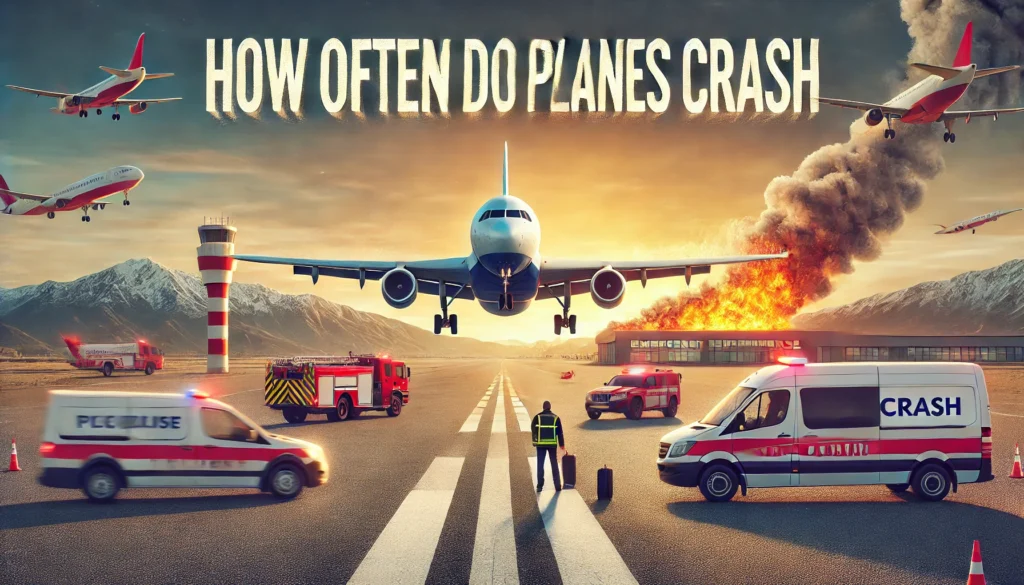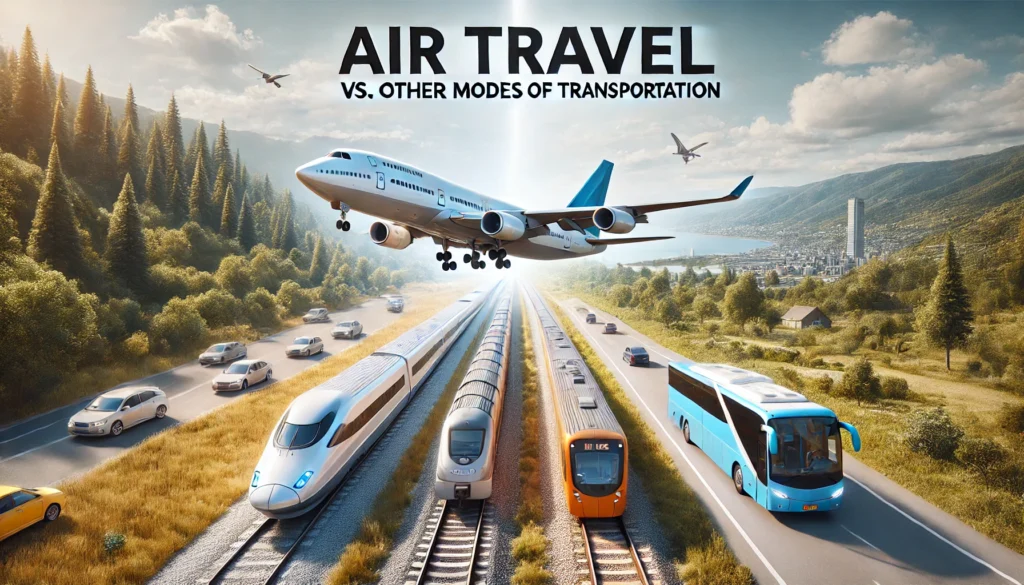Flying is often considered one of the safest modes of transportation, yet the question, “How often do planes crash?” frequently arises, reflecting a natural public concern. In this article we aim to provide a comprehensive and detailed exploration of plane crash statistics, causes, and survival rates, addressing various types of aircraft and their safety records. By understanding these factors, we can better appreciate the safety measures in place and why air travel is generally very safe.
Factors Influencing Plane Crash
Technological Advancements
The continuous development of aviation technology plays a crucial role in reducing the frequency of plane crashes. Innovations such as advanced avionics, improved aircraft materials, and sophisticated navigation systems enhance flight safety. Modern aircraft are equipped with multiple redundancies to prevent failures.
Pilot Training and Experience
The rigorous training and certification processes for pilots ensure they are well-prepared to handle various situations. Moreover, Experienced pilots are better equipped to manage emergencies, reducing the likelihood of crashes. Continuous professional development and simulation training further enhance pilot competencies.
Regulatory Oversight
Regulatory bodies like the FAA and the International Civil Aviation Organization (ICAO) enforce strict safety standards. These organizations conduct regular audits and inspections to ensure compliance, significantly reducing crash rates. Moreover, The implementation of global safety protocols ensures uniform safety standards across countries.
Maintenance Practices
Regular and thorough maintenance of aircraft is vital for safe operations. Thus, Airlines follow stringent maintenance schedules to ensure that all components of the aircraft are in optimal condition. Predictive maintenance technologies help identify potential issues before they become critical.
Weather Conditions
Adverse weather conditions are a significant factor in aviation accidents. Pilots receive extensive training to navigate through challenging weather, and modern aircraft are equipped with advanced weather detection systems to mitigate risks. Real-time weather monitoring and forecasting systems aid in avoiding hazardous conditions.
Human Factors
Human error remains a leading cause of aviation accidents. Continuous training and the implementation of safety management systems aim to minimize human errors. Moreover, Cockpit resource management (CRM) training helps improve teamwork and communication among flight crew members.
Air Traffic Control
Efficient air traffic control systems prevent collisions and manage airspace efficiently. Technological advancements in air traffic management have significantly reduced the risk of mid-air collisions. The integration of satellite-based navigation systems enhances the precision and safety of flight paths.
How Often Do Planes Crash?

Overview of Plane Crash Statistics
Planes crash less frequently than many other modes of transportation. Moreover, The Aviation Safety Network reports that the global accident rate for commercial flights is approximately one major crash per several million flights. This statistic underscores the safety and reliability of modern aviation.
How Often Do Commercial Planes Crash?
Commercial planes are subject to strict safety regulations and frequent inspections, making crashes very rare. On average, there is approximately one major commercial plane crash per year globally. These incidents are meticulously investigated to improve safety standards continuously.
How Often Do Plane Crashes Happen?
The frequency of plane crashes varies depending on the type of aircraft. Commercial jets have an exceptionally low crash rate, while smaller private and recreational planes experience crashes more frequently. According to the Federal Aviation Administration (FAA), most aviation accidents involve general aviation rather than commercial flights.
How Often Do Planes Crash in the US?
In the United States, the FAA and the National Transportation Safety Board (NTSB) maintain detailed records of aviation accidents. Commercial plane crashes in the US are extremely rare, with fewer than five major incidents occurring annually on average. This low rate is a testament to the rigorous safety protocols in place.
How Often Do Small Planes Crash?
Small planes, including private and recreational aircraft, have a higher crash rate than commercial jets. This is often due to factors such as pilot experience, maintenance practices, and operational environments. The NTSB reports hundreds of small plane crashes each year, although many are non-fatal.
How Often Do Passenger Planes Crash?
Passenger planes, operated by major airlines, boast an outstanding safety record. The fatal crash rate for passenger planes is approximately 0.06 per million flights. Advances in technology, rigorous training, and stringent regulations contribute to this high level of safety.
How Often Do Plane Crashes Occur?
Overall, there are about 500 to 1,000 aviation accidents globally each year, encompassing all types of aircraft. However, most of these incidents are minor and do not result in fatalities. Major commercial airline crashes are rare, accounting for a small fraction of total aviation accidents.
How Often Do Planes Crash a Year?
Annually, the number of plane crashes varies, but the global average includes hundreds of incidents, predominantly involving smaller aircraft. Major commercial airline crashes occur much less frequently, often fewer than five times per year worldwide.
How Often Do Private Planes Crash?
Private planes have a higher crash rate compared to commercial airlines. The NTSB reports about 1,000 private plane crashes in the US each year. While these crashes are more frequent, they typically result in fewer fatalities than commercial airline crashes due to the smaller number of occupants.
How Often Do Birds Cause Plane Crashes?
Bird strikes are a known hazard in aviation, yet they rarely cause crashes. Most bird strikes result in minor damage and pose no serious threat to flight safety. The FAA reports over 10,000 bird strikes annually in the US, but crashes resulting from these incidents are extremely rare.
How Often Do Commercial Planes Crash in the US?
Commercial aviation in the US is highly regulated, leading to an exceptional safety record. On average, the US experiences fewer than five major commercial plane crashes each year. This low rate reflects the effectiveness of advanced technology and rigorous safety protocols.
How Often Do Planes Crash in America?
In America, plane crashes are infrequent, particularly for commercial flights. Furthermore, The combined efforts of regulatory bodies, airlines, and technological advancements ensure that air travel remains one of the safest modes of transportation.
How Often Do Planes Crash in the Ocean?
Plane crashes in the ocean are rare but can occur, typically involving long-haul flights over large bodies of water. These incidents often gain significant media attention due to the challenges involved in search and rescue operations. Notable cases like the disappearance of Malaysia Airlines Flight MH370 highlight the rarity and complexity of such events.
How Often Do Planes Crash in US?
Plane crashes in the US are rare, especially for commercial flights. The country’s robust aviation safety framework, overseen by the FAA and NTSB, ensures a low incidence of crashes.
How Often Do Planes Crash Just Once?
Each plane crash is a unique event, often resulting from a combination of factors. While rare, these incidents are thoroughly investigated to prevent future occurrences. The term “just once” underscores the importance of understanding and mitigating the specific causes of each crash.
How Often Do People Survive Plane Crashes?
Survival rates in plane crashes have improved significantly due to advances in aircraft design and safety measures. The NTSB reports that about 95% of passengers involved in aviation accidents survive. Factors such as the nature of the crash, speed, and aircraft type influence survival rates.
How Often Do Planes Crash Into Each Other?
Mid-air collisions are extremely rare in modern aviation. Air traffic control systems and collision avoidance technologies have drastically reduced the likelihood of planes crashing into each other. Such incidents are usually the result of severe communication or navigation errors and are very infrequent.
Improving Plane Crash Survival Rates
Aircraft Design
Modern aircraft are designed with numerous safety features, including reinforced fuselages, fire-resistant materials, and improved evacuation systems. These features enhance the chances of survival in the event of a crash. Crashworthy seats and cabin structures help protect occupants during impact.
Emergency Procedures
Airlines train cabin crew extensively in emergency procedures. Regular drills and adherence to safety protocols ensure that passengers are evacuated quickly and safely. The presence of emergency equipment, such as fire extinguishers and life vests, contributes to survival.
Passenger Awareness
Passenger awareness and adherence to safety briefings play a crucial role in survival. Knowing how to operate emergency exits and following crew instructions can save lives. Passengers are encouraged to review safety cards and listen attentively to pre-flight safety demonstrations.
Rescue Operations
Advancements in search and rescue operations, including the use of satellite technology and rapid response teams, improve the chances of survival and recovery in the event of a crash. International collaboration and standardized emergency response protocols enhance the effectiveness of rescue efforts.
Plane Crashes Historical Context and Significant Incidents
Major Commercial Plane Crashes
Throughout aviation history, several significant commercial plane crashes have led to major safety improvements. Incidents like the Tenerife airport disaster, the disappearance of Malaysia Airlines Flight MH370, and the crash of Air France Flight 447 have prompted rigorous investigations and subsequent changes in regulations and technology.
Private and Small Plane Crashes
Private and small plane crashes, while more frequent, often highlight the importance of pilot training and aircraft maintenance. Incidents involving small planes often lead to discussions on improving safety protocols for general aviation.
Oceanic and Remote Area Crashes
Crashes in remote areas or over oceans pose unique challenges for search and rescue operations. The disappearance of Air France Flight 447 over the Atlantic Ocean and Malaysia Airlines Flight MH370 over the Indian Ocean are notable examples. These incidents have led to advancements in global tracking systems and international cooperation in search and rescue missions.
Comparative Analysis: Air Travel vs Other Modes of Transportation

Air Travel Safety Compared to Road Travel
Air travel is significantly safer compared to road travel. The National Safety Council reports that the risk of a fatal car accident is much higher than that of a plane crash. This comparison underscores the high safety standards maintained in the aviation industry.
Rail and Maritime Travel
When comparing air travel to rail and maritime travel, air travel still boasts a lower fatality rate. While train and ship accidents can be catastrophic, the frequency of such incidents is generally higher than that of major commercial plane crashes.
Public Perception and Media Coverage
Public perception of aviation safety is often influenced by media coverage. Plane crashes, though rare, receive extensive media attention, which can skew public perception. Understanding the actual statistics and safety measures in place helps provide a more accurate view of aviation safety.
Role of Technology in Enhancing Aviation Safety
Advanced Avionics and Automation
Modern aircraft are equipped with advanced avionics and automation systems that assist pilots in navigation, communication, and aircraft control. These systems reduce the likelihood of human error and enhance overall flight safety.
Predictive Maintenance
Predictive maintenance technologies use data analytics and machine learning to predict potential mechanical failures before they occur. This proactive approach to maintenance ensures that aircraft are kept in optimal condition, reducing the risk of in-flight issues.
Collision Avoidance Systems
Collision avoidance systems, such as the Traffic Collision Avoidance System (TCAS), help prevent mid-air collisions by alerting pilots to potential conflicts and suggesting evasive maneuvers. These systems have significantly reduced the risk of aircraft collisions.
Satellite-Based Navigation
Satellite-based navigation systems, such as GPS and ADS-B (Automatic Dependent Surveillance-Broadcast), provide accurate and real-time positioning information, enhancing air traffic management and flight safety.
Enhanced Weather Detection
Advanced weather detection systems provide pilots with real-time information about weather conditions, allowing them to make informed decisions and avoid hazardous weather. These systems include radar, satellite imagery, and weather forecasting tools.
Future Trends in Aviation Safety
Unmanned Aerial Vehicles (UAVs) and Drones
The integration of UAVs and drones into airspace poses new challenges and opportunities for aviation safety. Ensuring safe coexistence between manned and unmanned aircraft is a focus area for regulators and industry stakeholders.
Artificial Intelligence and Machine Learning
Artificial intelligence and machine learning technologies are being developed to assist in various aspects of aviation, from predictive maintenance to air traffic management. These technologies have the potential to further enhance safety and efficiency in aviation.
Sustainable Aviation and Safety
The push towards sustainable aviation, including the development of electric and hybrid aircraft, brings new safety considerations. Ensuring that these new technologies meet rigorous safety standards is essential for their successful integration into the aviation industry.
Cybersecurity in Aviation
As aviation becomes increasingly reliant on digital systems, cybersecurity is a growing concern. Protecting aircraft systems and data from cyber threats is critical to maintaining flight safety.
How Often Do Planes Crash “Final Thoughts”
Air travel remains one of the safest modes of transportation, with an exceptionally low incidence of plane crashes. Various factors, including technological advancements, stringent regulatory oversight, and continuous improvements in pilot training and aircraft maintenance, contribute to this safety record. While small planes and private aviation have higher crash rates, commercial aviation, particularly in the US, maintains an impressive safety record. Understanding these factors can help alleviate fears and enhance confidence in air travel.
For more insights and detailed articles on aviation safety and other related topics, explore Wings Over Cloud.

